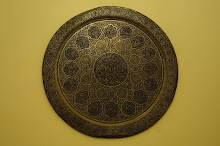A hakawati is a storyteller in Arabic, and also the title of a book by Rabih Alameddine, a Lebanese-American writer. This weave of stories, told by many "hakawatis", range from fantastic battles between demons and enchantresses, to the mundane collapse of Beirut in civil war. Its great hidden virtue is that it is also a one-shot window, through time and space, onto the many flavours and cultures of the Middle East.
Alameddine takes us to Urfa at the turn of the last century, with its Armenians, European missionaries, and the local obsession with competing flocks of pigeons; he dives into the beginnings of Mamluke Cairo and the rise of Baybars - the slave-turned-king and slayer of Mongols and Crusaders; he then veers to the Kharrat family in Lebanon, a Druze clan that made its money through its Japanese car dealership.
The book is the story of storytellers, and their stories, all interlaced to take the reader through centuries of the region, its fantasies and its harsh realities. Demons, colorful imps with the names of prophets - violet Adam, indigo Elijah, blue Noah, and green Job - robbers, thieves, and modern warlords compete in the pages with vain women and envious men.
Through it all, the writer manages to reflect the very incomprehensible nature of the region: colourful, dramatic, full of high emotion and dark prophets laced with the occult. It is a great story - or many stories - yet it is somehow bereft of any seeming purpose or end. Indeed, storytelling is a great tradition in the Middle East, and in the lands further to the east. The classic hakawati sits upon his throne in a cafe, often wearing a tarbouch or fez, regaling his listeners with tales that can go on for hours. This book strives to capture the beauty of that art, revealing that what matters is the tale itself, and the quality of its telling rather than some higher purpose. As with so much in the Middle East (possibly too much), the meaning is in the weave, whatever its content.
'The Hakawati' builds and constructs these half dozen stories over four sections, and one wonders where they will all go. In the last section, however, Alameddine shows he knows the art of ending, closing several tales like doors that suddenly and firmly shut. What seemed like lyrical fantasies begin to stand on more sober ground: Baybars is really no hero but a cunning self-promoter; the narrator's entrancement with Beirut is now but a cold and barren reality; and the demons' battles come to a harsh and incomprehensible closure.
The author ends the book with a touching moment, the narrator, coming to terms with a troubled relationship with his father, promises to tell his stories at his dying parent's hospital bed. The tale goes on; no matter the shifting sands and passing of lives - the hakawati does not stop.
Alameddine takes us to Urfa at the turn of the last century, with its Armenians, European missionaries, and the local obsession with competing flocks of pigeons; he dives into the beginnings of Mamluke Cairo and the rise of Baybars - the slave-turned-king and slayer of Mongols and Crusaders; he then veers to the Kharrat family in Lebanon, a Druze clan that made its money through its Japanese car dealership.
The book is the story of storytellers, and their stories, all interlaced to take the reader through centuries of the region, its fantasies and its harsh realities. Demons, colorful imps with the names of prophets - violet Adam, indigo Elijah, blue Noah, and green Job - robbers, thieves, and modern warlords compete in the pages with vain women and envious men.
Through it all, the writer manages to reflect the very incomprehensible nature of the region: colourful, dramatic, full of high emotion and dark prophets laced with the occult. It is a great story - or many stories - yet it is somehow bereft of any seeming purpose or end. Indeed, storytelling is a great tradition in the Middle East, and in the lands further to the east. The classic hakawati sits upon his throne in a cafe, often wearing a tarbouch or fez, regaling his listeners with tales that can go on for hours. This book strives to capture the beauty of that art, revealing that what matters is the tale itself, and the quality of its telling rather than some higher purpose. As with so much in the Middle East (possibly too much), the meaning is in the weave, whatever its content.
'The Hakawati' builds and constructs these half dozen stories over four sections, and one wonders where they will all go. In the last section, however, Alameddine shows he knows the art of ending, closing several tales like doors that suddenly and firmly shut. What seemed like lyrical fantasies begin to stand on more sober ground: Baybars is really no hero but a cunning self-promoter; the narrator's entrancement with Beirut is now but a cold and barren reality; and the demons' battles come to a harsh and incomprehensible closure.
The author ends the book with a touching moment, the narrator, coming to terms with a troubled relationship with his father, promises to tell his stories at his dying parent's hospital bed. The tale goes on; no matter the shifting sands and passing of lives - the hakawati does not stop.















No comments:
Post a Comment